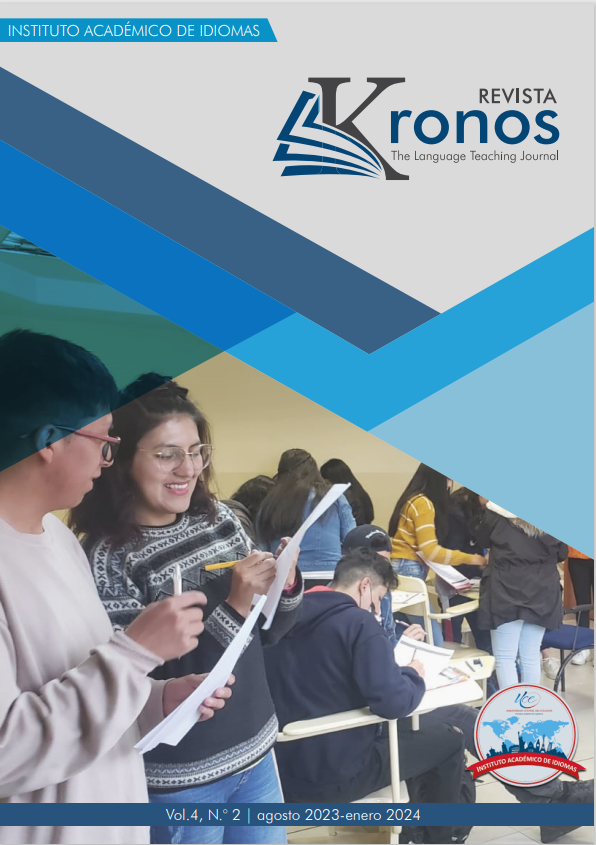El auge de la IA en la educación de idiomas
un punto de inflexión para la enseñanza de inglés como lengua extranjera en Ecuador.
DOI:
https://doi.org/10.29166/kronos.v4i2.4638Palabras clave:
IA en la educación de idiomas, inglés como lengua extranjera, Ecuador, Chatgpt, enseñanza del inglés, pensamiento crítico, habilidades superiores de pensamiento, docentes EFLResumen
Este artículo analiza el auge de la IA en la enseñanza de idiomas y su impacto en la enseñanza del inglés como
lengua extranjera en Ecuador. El autor comparte su experiencia como profesor de inglés como lengua extranjera (EFL) en un programa de bachillerato internacional y destaca la importancia del pensamiento crítico y el pensamiento de orden superior en el aprendizaje de idiomas. Se explora el uso de la IA, en particular ChatGPT, en el aula, así como sus
posibles beneficios y limitaciones. También se realiza una exploración perspicaz a través de conceptos técnicos que implican el significado de la IA generativa y sus ramificaciones hasta hoy. El autor enfatiza la necesidad de profesores bien
formados que puedan adaptarse e innovar con la tecnología para brindar experiencias de aprendizaje significativas a los
estudiantes. El autor explora en profundidad cómo la enseñanza del inglés en Ecuador ha presentado restricciones que
superar para lograr una buena comprensión de cómo lo aprenden realmente los ciudadanos y cómo la IA podría ayudar en esa tarea. El artículo plantea preguntas sobre el futuro de la educación y el papel de los profesores en un mundo
impulsado por la IA. Concluye destacando el potencial de la IA para mejorar drásticamente las experiencias de enseñanza y aprendizaje, pero también destaca la importancia de utilizar las herramientas de IA de manera eficaz y garantizar
que se alineen con las necesidades de los estudiantes y los objetivos del curso. El artículo destaca que la IA puede hacer que la enseñanza sea más eficiente y efectiva, pero los profesores no son intercambiables. El uso de la IA en la educación lingüística aún se encuentra en sus inicios en Ecuador, pero se están desarrollando iniciativas prometedoras, con
el potencial de igualar a todos los estudiantes y mejorar la calidad de la educación.
Descargas
Citas
Cardona, M. A., Rodríguez, R. J., & Ishmael, K. (n.d.). Artificial Intelligence and the Future of Teaching and Learning.
Dp-language-B-guide.pdf. (n.d.).
Holmes, W., Persson, J., Chounta, I.-A., Wasson, B., & Dimitrova, V. (2022). Artificial intelligence and education: A critical view through the lens of human rights, democracy and the rule of law. Council of Europe.
Regona et al. (2022). Components, types, and subfields of AI based on Regona et al. (2022).
Schmidt, T., & Strassner, T. (2022). Artificial Intelligence in Foreign Language Learning and Teaching. Anglistik, 33(1), 165–184. https://doi.org/10.33675/ANGL/2022/1/14
Publicado
Cómo citar
Número
Sección
Licencia
Derechos de autor 2023 Jorge David Quijano De La Rosa

Esta obra está bajo una licencia internacional Creative Commons Atribución-NoComercial-CompartirIgual 4.0.












